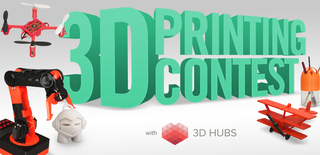Introduction: Mini Arduino CNC
This instructable shows you how to build a cheap and easy, but very small CNC using Arduino UNO. You can use it to mill thin wood, different foams or you can use it for plotting different sketches and also can be used for engraving and etching purposes.Inspired by the Small Arduino CNC (thank you very much for your help), i made it easily.
PARTS YOU NEED:
For this project you will need:
3 old CD/DVD-Roms
1 Computer power supply
3 Easydriver boards
1 Arduino Uno
2 pieces of Wood
1 Soldering Iron
1 Soldering Wire
Step 1: Demo Video
Demo Video 1
Thanks to everybody who voted me for the contest and I am very glad that i have won 2 contests :D
UPDATE:
Watch the new video of this mini CNC plotter. I have increased the feed rate for sketching. I was using Deskengrave and many other softwares just to check the working of the machine, the results was not satisfactory because some Gcode generated codes were not supported by the GRBL library. After searching n the internet i found Inkscape software. Inkscape is a free and open-source vector graphics editor; it can create or edit vector graphics such as illustrations, diagrams, line arts, charts, logos and even complex paintings. By using this software i can import Dxf, Dwg, JPG, SVG etc files and can convert them into GCODE. You can download Inkscape by clicking below link.
Download Inkscape
I have import several image files which i had downloaded from the google, convert them into Gcodes and send to the GRBL software, it worked perfect :D. Below is the link of sample video i have just made.
Demo Video 2
How to use Inkscape?
There are alot of videos on youtube which will guide you to how to use this software and generate Gcodes. For quick guidance see this link.
Inkscape and Serial Transfer
Step 2: Using the DVD CD-ROM, Get Stepper Motors
I took three wasted DVD-drives apart because we need the steppers (XYZ axis)
Step 3: Step 3: Assemble and Build the Structure
For this part just need a base platform and two pillars. I made the base from wood and pillars are of aluminum. Now simply screw the wooden base withe your Pillars as shown in first Figure.
Place the X axis across the pillars and Y axis onto the wooden base as shown in figures.I used glue to assemble all the axis. Just make sure that all the axis are exactly perpendicular to each other, they must be at right angle.
Step 4: Step 4: Soldering and Wiring
This is also not a very complicated step. You just need to solder wires with your stepper motor. Be careful while soldering and don't use high watt solder as it can burn the wires of stepper, mine was 30W and it was OK. After that, simply sold all the connectors in easydrivers and connect the wires as given in figure.
Step 5: The Software
1. Download and install the Arduino Software, the grbl library and the Grbl controller. or goto the link below
http://blog.protoneer.co.nz/quick-grbl-setup-guide-for-windows-arduino-g-code-interpreter/
2. After downloading the Grbl library, you have to click sketch --> import library --> add library in the Arduino software and select the zip file you just downloaded.
3. Upload the library to your Arduino.
4. After you installed Grbl on your Arduino open the Grbl controller and select the port to which your Arduino is connected. Press the open button.
5. A list of options appears in the command screen. You have to change a few of these options, by entering the number of the option (the numbers with a $) = and the new value (For example $130=35.000).If your motors are moving into the wrong direction, go to Tools --> Options --> Axis and click the axis you want to invert.
6.You can use any Gcode Generator software to make gcodes.I download DeskEngrave software which is also a gcode generator, here is a link deskEngrave
Step 6: Thank You, Instructables!!
It is really very easy project if you want any help you can ask anytime.
I really want to thank INSTRUCTABLEs and all the people here sharing their ideas. Following this platform i am really able to make my own projects very easily :D :D :D

Second Prize in the
Automation Contest

Runner Up in the
3D Printing Contest

Participated in the
Explore Science Contest











